Half Halt or Half Parade?
I believe that one of the reasons the half halt generates so much confusion amongst English speaking riders is the very expression itself … ‘HALF HALT’. It can give the impression that the aids required to achieve the half halt are the same as those for an uncompleted halt. This has resulted in some riders exaggerating their aids, interfering with their horse’s movement and sometimes even destroying the forward urge. When this happens it is not surprising that some people condemn the half halt as being damaging to the horse’s preparation. But, to be fair, they should only condemn the badly trained riders who cannot apply their aids.
Correctly coordinated half halts, while bearing a similarity to the aids for halt, are different, and there should be no confusion between the two terms or their correct application.
In most European languages the French term – Half Parade – is used, and riders do not seem to have the same confusion between ‘half halts’ and ‘half-a-halt’ … the term for halt is ‘full parade’. So let’s take away a big chunk of mystery right now by talking about the half parade instead of the half halt.
Does this scene sound familiar? You’re riding your horse, and applying what you think are correct Half-Parades, when your instructor bellows – ‘Don’t pull on the reins, don’t use your hands’. You feel confused as you know that in order to apply correct Half-Parades, you need to use the rein aids, even though your leg and seat aids are dominant.
However, you obey your instructor’s command and decrease the rein aids until your instructor says, ‘That’s better’. This usually happens when you have stopped using any rein aids at all. At about the same time you notice that your horse’s frame is becoming longer and longer, and his hind legs are not engaging as much as they were. You feel that your horse is falling on his forehand. Maybe he’s even starting to pull or lean on the bit and lose his rhythm.
Your instructor bellows, ‘Engage your horse more. Influence his hindlegs. Your horse needs to be rounder.’
You start to apply stronger aids, stronger Half-Parades, and therefore, stronger rein aids. You may feel your horse start to bend his hindlegs more, and his balance and rhythm may begin to improve. But your instructor is not satisfied with your riding. ‘Don’t pull on the reins, don’t use too much hand.’
Once again, you decrease your rein aids, but you can’t win! Yet again your instructor exclaims: ‘Your horse is on the forehand.’
Again you apply the stronger Half-Parades, only to hear: ‘Don’t pull on the reins. Don’t move your hands.’
You are now extremely confused. What can you do?
You already know that riders with the best hands seem to do nothing with their hands other than carry them in an upright position in front of their bodies. The truth is that although these riders seem to do nothing with their hands, they are actually doing a lot. Their hands are actively influencing the horse. Their hands are working in conjunction with their leg and seat to apply coordinated Half-Parades.
How is this possible without any visible movement of the hands?
The secret is to use your back to support your hands during the active phase of the Half-Parade.
The rider’s upper body (from your seat upwards) has to work in conjunction with the rider’s arm, ie. in the moment that the Half-Parade is applied, the rider’s back is active (contracted) in unison with the upper and lower arms, including the hands. This is frequently called ‘bracing the back’.
The contraction of the back occurs for a fraction of a second during the active phase of the Half-Parade, ie. when the horse is lifting his hindleg on the corresponding side. The active phase of the Half-Parade is followed immediately by the passive phase.
The action of the rider’s back during the half halt is very similar to the action people use when they are on a swing. I would like you to imagine that you are playing on a swing now. What can you feel? When the swing goes up, you will support and follow the movement. You will hold the chains with a strong grip, and your upper body and arms will work together as you drive the swing higher, ie. your back, upper and lower arm muscles will contract and you will be bracing your back. The angle between your upper and lower arms will be between 80 and 120 degrees. When the swing goes down, you will maintain the same position but your driving muscles will become relaxed or passive. Your hands will still be in contact with the chain, but your grip will be passive. In the next moment, when the swing goes up again, you will again be part of the motion and to support it your upper body and arm muscles will contract and you will be bracing your back. The angle of your elbows will remain the same (80-120 degrees). Coming down your muscles will again relax but the angle between your upper and lower arms will remain the same.
The type of coordinated back and hand action on the swing is similar to the influence you need to apply the Half-Parade. To apply successful Half-Parades you don’t need to move your arm and hands at all! You can have a strong rein influence by holding with your arms and hands just like in the motion on the swing, providing you have the active support of your back at the same time.
In order to show you how important the support of the back is, I would like you to imagine you are on a swing again. Or, better still, actually find a swing and do this exercise. As the swing goes up, do not contract your back and arm muscles, instead follow the motion with a collapsed back. What happens?
You instinctively try to compensate for the lack of support from your back by pulling with your hands. The angle at your elbows changes, your hands and elbows move back. The same thing will happen in the Half-Parade if you try to apply rein aids without the supporting influence of your back. In order to keep your balance you will be forced to pull on the reins, causing your hand to go back. The angle of your elbows will change just like when you are on the swing and you didn’t use your back.
I would like to warn you about misunderstanding the use of the back. Sometimes you will see poor or harsh riders who lean back as they ride. This changes the angle at the rider’s elbows, and consequently, the hand aid can become too harsh. Also, the contracting of the rider’s back can be too strong, and the horse may suffer pain. In order for the back to correctly support the hand action, the rider’s body has to be erect with the chest out (ie. the rider’s body is approximately perpendicular to the horse’s back).
Learning how to use your back to support your hands will help you ride better. Specifically, you will be able to influence your horse more effectively. This is considered one of the most valuable secrets of riding. Being able to do this correctly often makes the difference between brilliant riding and mediocrity. To be able to apply the Half-Parade correctly you will need to practise, through exercising, exercising, exercising and understanding the theory behind what you are trying to do.
THE TRANSITIONS
The key to being able to ride correct transitions is the Half-Parade. Unless you can apply the Half-Parade effectively, so that it influences your horse, you will never be able to ride consistently correct transitions.
There are two types of transitions: those within the same pace (for example, a transition from collected to extended trot) and transitions from pace to pace. In both cases there are upward and downward transitions.
Transitions within the same pace are part of the more advanced work. However transitions from pace to pace are part of the basic work and we will focus on them now.
The Downward Transitions
The downward transitions are from canter to trot, canter to walk, canter to halt, trot to walk, trot to halt and walk to halt. The degree of difficulty differs in these transitions, but the application of the aids is very similar.
Let us begin by examining the transition from canter to trot. The first phase of the transition involves preparing your horse. Your horse is correctly prepared when he is attentive to your aids and is well balanced, ie. his hindlegs are stepping under his body. The Half-Parade is the tool that you use to prepare your horse.
The second phase of the transition is the execution. This is where you apply a stronger Half-Parade, strong enough to change the pace. This is the active part of the Half-Parade, and it is followed immediately by the passive part. This is where you soften the rein. This is critical to the success of the transition. You do not break the contact with the horse’s mouth, rather the seat and hand are inactive – similar to their state in the downward stroke when you are on a swing.
Many riders ask me, how many Half-Parades do they need to apply to correctly prepare their horse for a transition? They also ask about how strong the Half-Parades need to be.
There is no simple recipe. If there was, much of the challenge of riding would be lost. The truth is that the intensity and number of Half-Parades necessary varies from horse to horse, and from situation to situation, for example, the same horse may be more sensitive when ridden at home that it is at a competition. If you are riding a correctly prepared advanced horse you only need to sit taller (ie. brace the back), apply your leg and ride into a slightly restraining hand. Your horse will be jumping under and be ready for the transition.
For green or badly prepared horses, you will need to apply stronger Half-Parades – one, two, three or four times. If you still feel that your horse hasn’t engaged his hocks sufficiently, and the centre of gravity isn’t back far enough, you will need to apply a fifth or sixth Half-Parade. This is followed by a stronger Half-Parade, strong enough to change the pace.
For the correctly prepared advanced horse, you just have to think transition, sit deeper with a slightly influencing leg into a very light holding hand and our horse will execute a downward transition.
If you fail to apply the Half-Parade to prepare your horse, and you only apply a strong Half-Parade to change the pace, your horse will not be prepared and it is likely that he will become unbalanced and fall on the forehand. If this happens you may resort to using too much hand as you will feel it is necessary for you to pull on the reins in order to support your horse. The transition will not have the gymnastic influence on your horse’s hindlegs. Instead he may experience a jarring sensation through his forelegs. Over time this can accumulate and susceptible horses may break down.
Another possibility is where you use the Half-Parades to correctly prepare for the transition, but you miss the correct moment to apply the strong Half-Parade to change the pace. Despite your efforts to correctly prepare for the transition, your horse will instantly fall on his forehand. In other words, his centre of gravity will move forwards and you will be left with no option but to pull on the reins to change the pace. Once again, the transition will have no gymnastic value on the horse’s hindlegs, instead the forelegs will be stressed.
Another possibility is where you prepare correctly and apply the stronger Half-Parade correctly, but you fail to soften the reins in the next moment. In this case your horse is likely to become tense and he will not got smoothly and correctly into the new pace. He may even throw his head up, or noticeably lose his rhythm.
To illustrate this situation, imagine that you are riding a downward transition from trot to halt. You have applied your Half-Parades for the preparation correctly, and your horse is engaged and attentive. Next you apply a stronger Half-Parade to ride halt. In this case, you have done a Full Parade (consequently each Half-Parade that brings the horse to a halt is named a Full Parade). Your horse responds accordingly and halts perfectly, four square, a real picture of a halt. But you fail to soften! What happens? You horse becomes tense and steps backwards or sideways or both.
I’m sure if you are honest with yourself, you will admit that has happened to you frequently in the past. If it happens again you will now know why. You have forgotten to soften in the passive phase of the transition.
I would like to really emphasise how important it is to use the Half-Parades correctly when riding downward transitions. They are critical to the success of your transitions. Remember that the Half-Parade must be applied just as your horse’s hindleg is coming off the ground and under the horse’s body. This is the only time that you can influence the horse to engage more, to bend his hindleg further, and to place it further underneath his body.
Remember that the horse moves his legs alternately, so to be successful you need to apply alternate Half-Parades – first inside then outside. This is why the strong Half-Parade to change the pace is in fact formed from two successive alternate Half-Parades, first on the inside and then of the outside, or vice versa, just as the horse’s hindleg on the appropriate side is coming off the ground. If you coordinate your aids correctly you will feel your horse lower and engage his hindquarters.
story continues below the advertisement
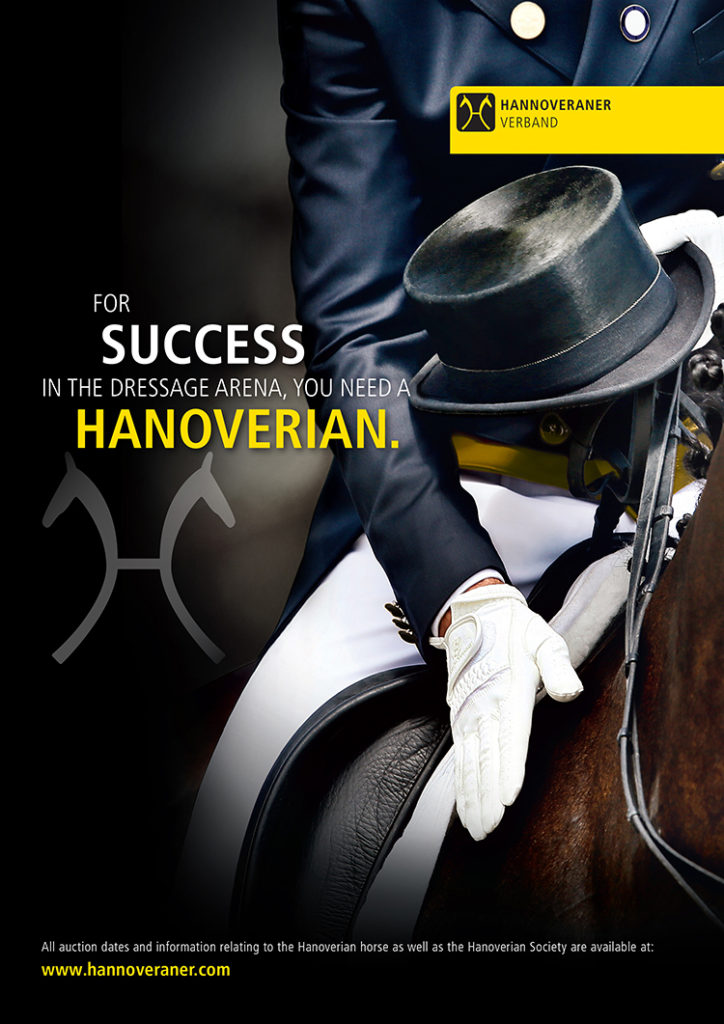
If you are riding a younger horse, or a green horse, it may be beneficial to apply your aids with your weight slightly off your seat bones (ie. place your weight more towards your crutch). As your horse develops and strengthens, you can gradually use your seat bone pressure in conjunction with your leg, back and rein aids.
When you are riding a downward transition to halt on a correctly trained horse, he will become accustomed to halting after you have applied the Full Parade inside. Your horse will automatically bring his outside hind leg to the level of his inside without it being necessary for you to apply the outside Full Parade.
If you try to apply a Half-Parade to influence the horse’s hindleg and at the same time, use an active restraining rein influence with the opposite rein you will interfere with your horse’s hind leg action during the stretching phase on that side, ie. as his hind leg meets the ground on his opposite side you will be interfering with his action. In this situation your horse will resist or yield reluctantly. His hind hock and pastern joints will be stressed unnecessarily.
story continues below the advertisement
Breeding a dressage star in Australia this season? Find a star stallion like Benicio: www.ihb.com.au
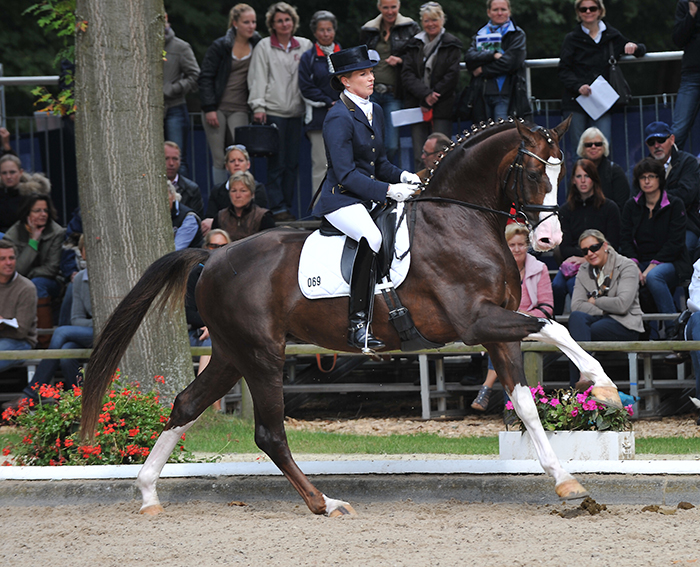
The Upward Transition
The upward transitions are from halt to walk, halt to trot, halt to canter, walk to trot, walk to canter, and trot to canter. As with the downwards transitions, the upward ones are very similar to each other. The difference is simply achieved by the intensity of the rider’s aids.
Let us examine the transition from walk to trot. Firstly you need to apply a Half-Parade on the outside to prepare your horse and to ensure he is attentive. Then you use your legs and seat to push your horse through his poll, forward into the new pace. In the moment that your horse has gone forward into trot, you must soften your hands to encourage your horse to develop freedom, rhythm and forward urge in the new pace (remember, just as with the downward transition, you do not break the elastic contact, but rather it becomes a lighter contact). In the next moment, the contact will be firmer as you apply Half-Parades to further refine the new pace.
If you fail to prepare your horse for the upward transition and instead apply the aids for the transition directly, your horse may not be balanced and attentive enough to execute the transition correctly. He may be startled by your aids.
The best example to illustrate this scenario is in the transition from walk to canter. If this transition is performed correctly there are no trot steps. Imagine you are riding your horse at the collected walk and you apply the aids for canter without first preparing your horse. He will be surprised by your sudden aids, and will rush forward at the trot, and eventually he may fall into canter. This has probably happened to you! If this happens again, you now know why. You can remind yourself that you have forgotten to apply a Half-Parade outside to prepare your horse.
If you fail to use your leg and seat aids strongly enough (remember that the intensity required is dependent on your horse’s level of preparation and his sensitivity) your horse will not change his pace at all. If you apply your leg and seat aids with the right intensity, but fail to push your horse through the poll into your slightly restraining hands, your horse may come above the bit.
If you prepare well, and your horse changes the pace but you fail to give with your hands, your horse may become tense (as happened with the downward transition).
To conclude, the Half-Parade is the key to riding transitions correctly. It is the alphabet that gives riders the foundation to be able to communicate effectively with their horses. Just like the alphabet, the Half-Parade takes time to learn correctly. Once the rider has a basic understanding, he or she can spend years exercising and refining their technique, just as a world class novelist develops from their early scribbles as a child through to creating a multi-million dollar best seller.
Without the alphabet, the novelist could have all the skill in the world, but he or she would not be able to write a book. The Half-Parade to the rider is the same as the alphabet to the novelist.
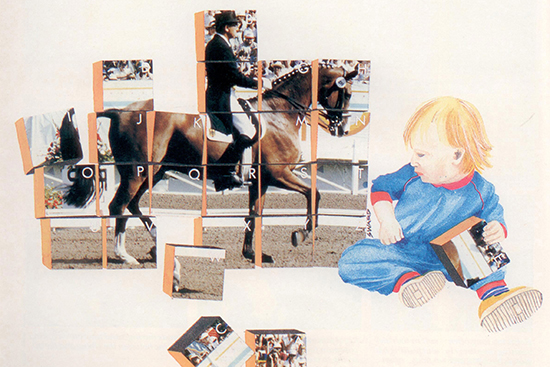


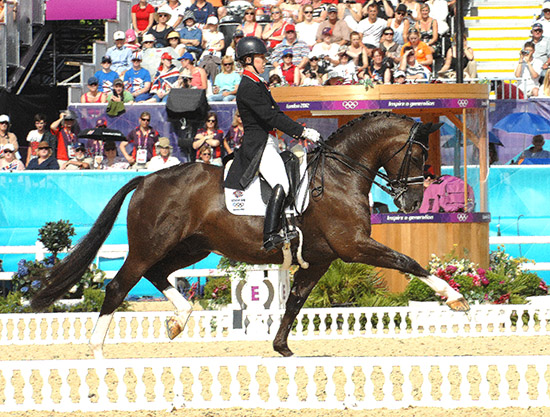
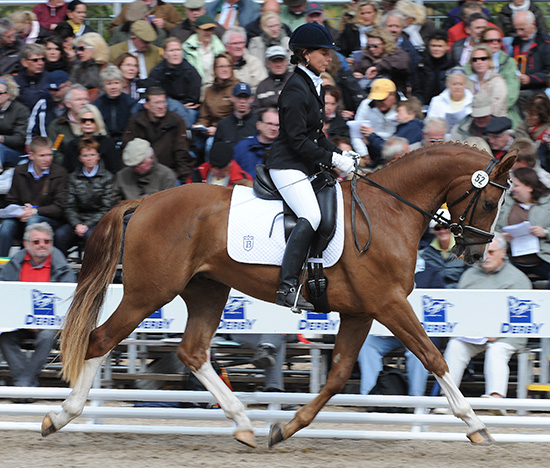
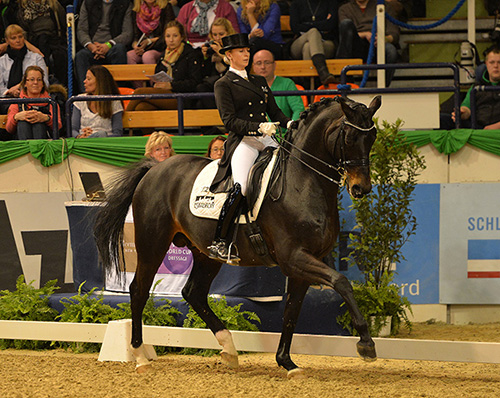
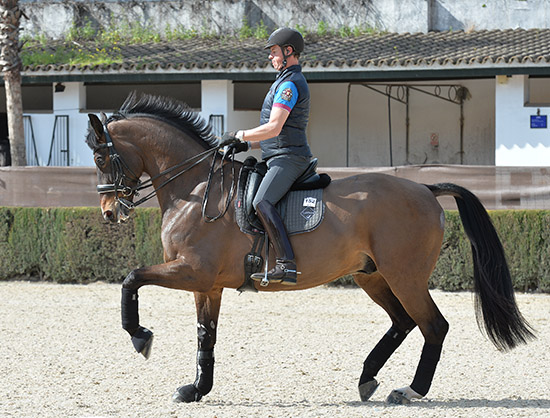
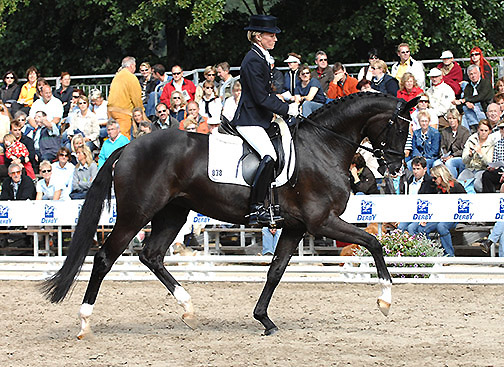
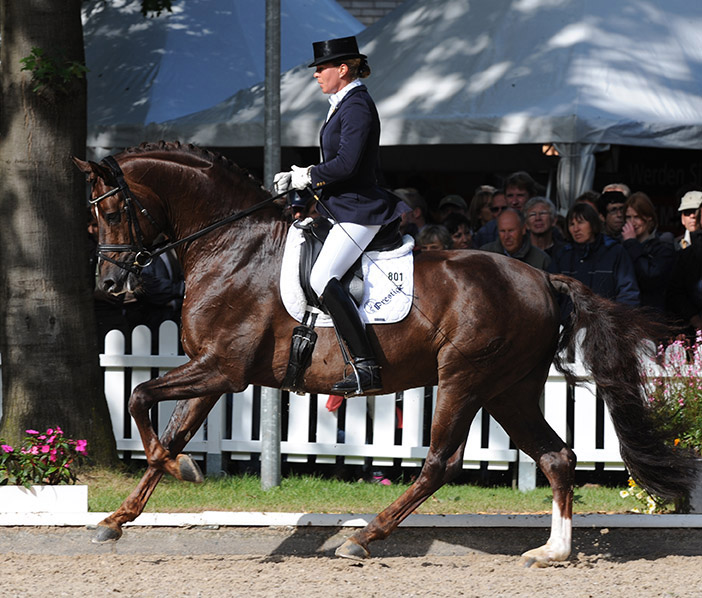
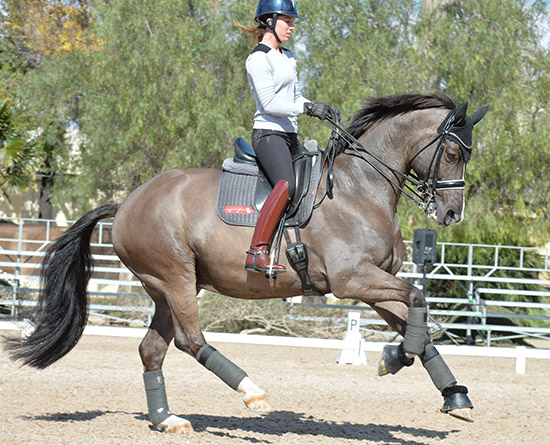
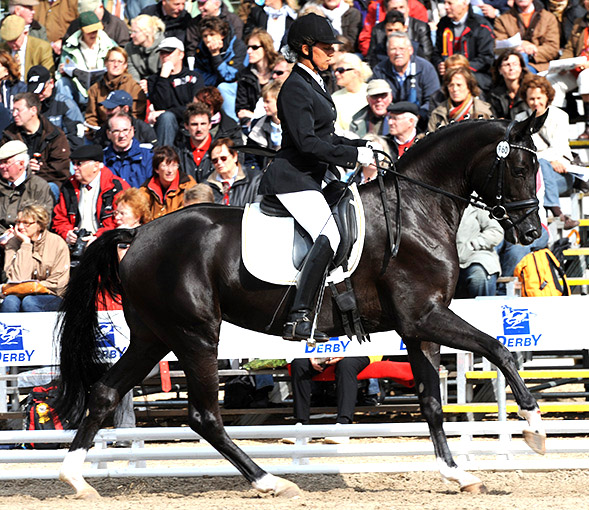
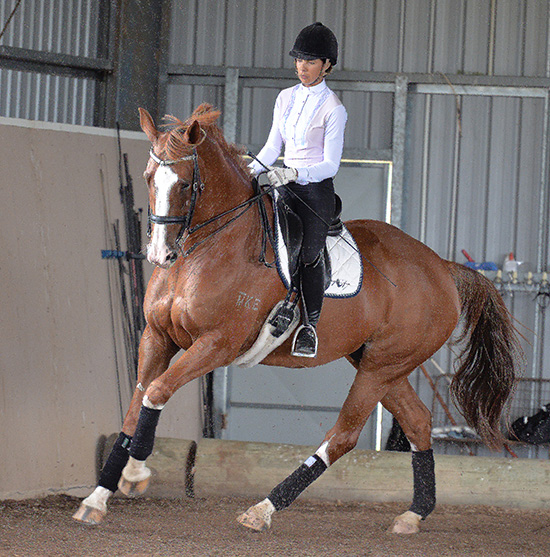
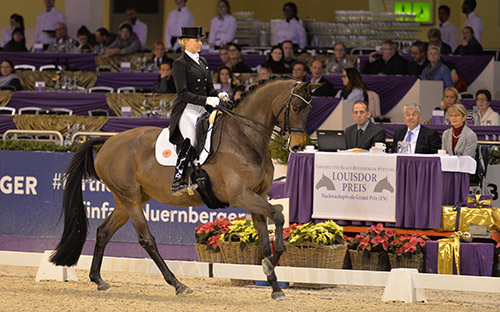
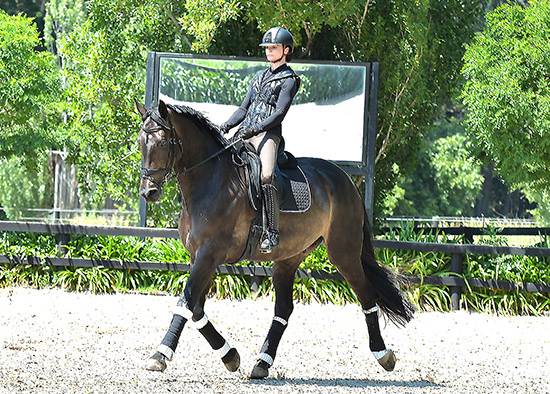
This has made the using of the half halt much clearer. Practice, practice and more practice.
Thank you very much!
Brilliant he came to Southland New Zealand 20 years ago and talked of proof stones and parades. The swing analogy is perfect as nowadays everyone talk of core muscles which is fine but not clear. Thank you Christian.